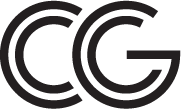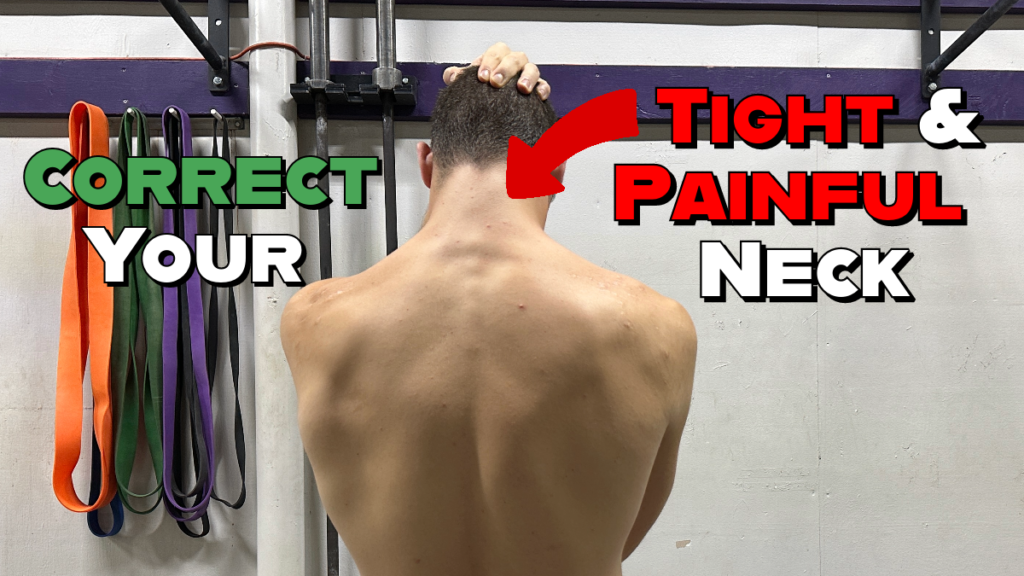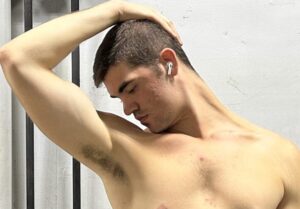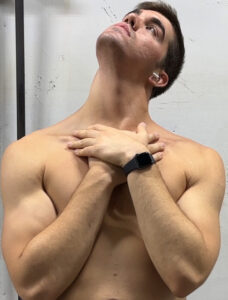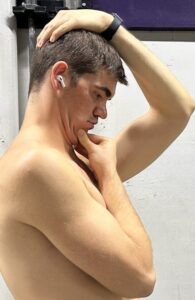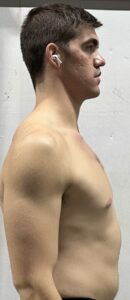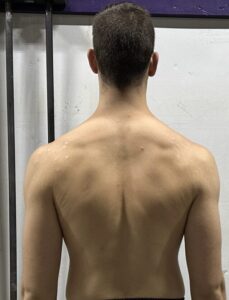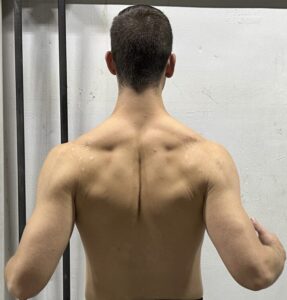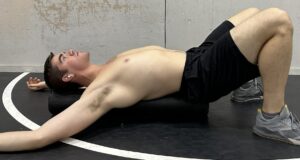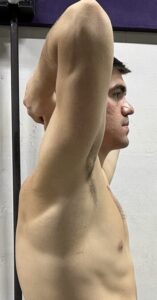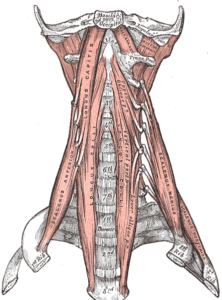Neck pain can be caused by many factors. This article provides tools you can use to relax overactive muscles and correct postural causes of neck pain.
Mobilize
Your neck pain can be caused by tight muscles or which may cause a restriction in motion. If you struggle to move your head you may benefit from stretching and mobilizing techniques. However, be cautious with how much pressure you use to perform these movements to avoid injury. Gradually increase tension until a comfortable stretch is felt.
Upper Trap Stretch

- Let gravity take one ear to one shoulder.
- Let your arms hang and relax your body.
- You may use one arm to gently apply pressure to increase the stretch.
- Hold 30 sec repeat 3 times
Levator Scapulae Stretch
- Look down at your armpit.
- Let gravity take the weight of your head.
- To increase the intensity of the stretch, you may use your hand.
- Perform for 30 seconds for 3 sets.
Scalene Stretch (The Stargazer)
- Let your head bend to touch one shoulder, and rotate to look upward to the other side.
- Placing your hands over your upper chest may help you feel a stretch.
- Perform for 3 sets of 60 seconds.
Towel extension (SNAG)

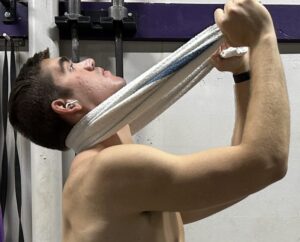
- Place the towel at the level you want to stretch.
- Let gravity take your head and gently pull the towel.
- Slowly tuck your chin to your throat until you feel a stretch.
- Perform for 3 sets of 30 seconds.
Towel Rotation (SNAG)
- Wrap a towel around your neck.
- Cross your arms and pull down with the arm underneath.
- The arm on top will pull across your cheekbone to rotate your neck.
- Perform for 3 sets of 30 seconds.
Back of the Neck Stretch (Suboccipitals)
- First, you will perform a chin-tuck with the assistance of one hand.
- The other hand will gently pull down on your head.
- This should create a gentle stretch in the back of your head.
- Perform for 3 sets of 60 seconds.
Posture
Neck pain can be caused by poor posture. This is because prolonged positions can cause muscles to fatigue, compensate, and tighten. Be aware of your forward head and rounded shoulders. Be proactive throughout the day by taking short movement breaks. Sitting with one posture can cause anyone pain.
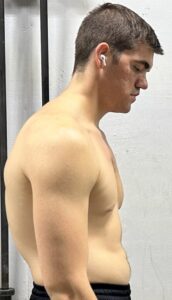
Scapular Retraction
- Squeeze your shoulder blades back together.
- Think about bringing your elbows behind your body.
- Hold for 2 seconds, and repeat for 20 reps daily.
Field goal stretch
- Lay down with your bottom, spine, and head on the roller.
- Bring arms into a field goal position or 90-90.
- Can take arms overhead to stretch a different part of the muscle
- Perform for 3 sets of 60 seconds.
Chicken Wing
- Place hands behind the neck.
- Retract your shoulder blades and chin at the same time.
- Pull your elbows back.
- Perform for 10 sets with a 5-second hold.
Anatomy
Scalenes: (Anterior, Middle, and Posterior)
-
- Functions to bring your chin to your chest and bring one ear to touch the same side shoulder. There are three separate muscles here, anterior, middle, and posterior which cover the front and side of your neck and play different roles. For instance, the posterior scalene raises your second rib.
- Attach to the middle of your neck vertebrae and insert on your first and second ribs.
Levator Scapulae:
-
- Functions to lift and downwardly rotate your shoulder blades.
- Attaches to the first 4 vertebrae of your neck and inserts on the upper portion of the shoulder blade.
Upper Trapezius:
Tightness is often seen in individuals who hold stress in their neck with a forward head and rounded shoulders. This can cause pain and headaches.
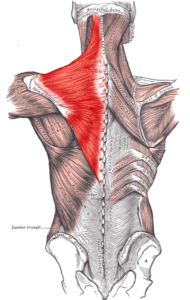
- Function: The upper portion, side bends the head, rotates the neck, and helps move the shoulder, among other functions.
- Attaches to your collarbone, shoulder blade, base of your skull, vertebral segments, and the tip of your shoulder.
Suboccipitals (Rectus capitis posterior major, rectus capitis posterior minor, obliquus capitis inferior, and obliquus capitis superior):
Tightness in these muscles can cause headaches and pain.
- Function to look up, look left and right, and bring your head to each shoulder. These tiny muscles each have unique attachments and functions.
- Attach to the first two vertebrae and the base of your skull.
MY KEY LINKS:
- 💡 YouTube – https://www.youtube.com/@cartergansky
- 📸 Instagram – https://www.instagram.com/carter.r.gansky/
- 🐦 Twitter – https://twitter.com/CarterGansky
- 🌲 Linktree – https://linktr.ee/cartergansky
- 🔊 Discord – https://discord.gg/sQxvHH78Ga
WHO AM I:
I’m Carter Gansky, a fitness and health advocate and a Doctor of Physical Therapy in training. I explore the strategies and tools that help us live motivating, healthier, and more fulfilling lives.
GET IN TOUCH:
🧠 contactcartergansky@gmail.com
For collaborations or other business inquiries.
References:
https://www.injurymap.com/free-human-anatomy-illustrations
